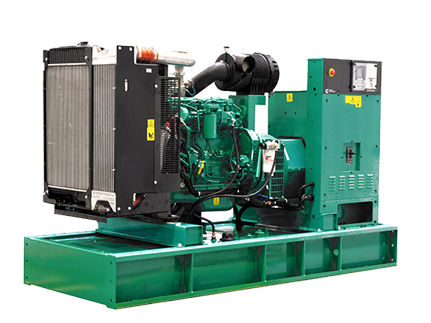Where to Locate Licensed Used Engines for Sale for Any Make or Version
Where to Locate Licensed Used Engines for Sale for Any Make or Version
Blog Article
Important Factors To Consider for Making Certain Quality and Long Life in Utilized Engines
When considering the acquisition of a made use of engine, guaranteeing its high quality and durability needs a multifaceted strategy. Maintenance history is a pivotal variable, as it supplies insight right into the engine's past care and potential future reliability. Efficiency testing is additionally important, providing a picture of the engine's operational performance.
Engine Background Examination
In the realm of used engines, an extensive engine history assessment is critical to guaranteeing quality and integrity. Recognizing an engine's past can provide critical insights into its efficiency capabilities and potential future longevity.
Engines that have undertaken considerable repairs might have underlying problems that could resurface. Examining the engine's gas mileage can serve as an indication of wear and tear. An engine made use of largely for long-distance freeway driving may be in much better condition than one subjected to frequent stop-and-go city traffic.
Fundamentally, an exhaustive examination into an engine's background is crucial for making educated buying choices. used engines for sale.
Comprehensive Evaluation Overview
While comprehending an engine's background offers beneficial context, an extensive examination is the following action to guarantee its present condition straightens with historical information. The evaluation needs to begin with a visual analysis, checking for indications of leakages, corrosion, and uncommon wear. Evaluate the outside for oil spots or coolant marks, which might indicate underlying problems.
Following, evaluate the engine's mounting system for any type of loosened screws or abnormalities that might influence efficiency. Pay very close attention to the problem of belts and tubes, as these components are essential for ideal engine functionality. Take a look at for splits, fraying, or any signs of damage.

Recognizing Deterioration
Identifying indications of wear and tear is vital for analyzing a used engine's longevity and reliability. It entails a thorough exam of different engine parts to identify their existing state and possible future efficiency. Typical signs include noticeable deterioration, which can affect metal parts and jeopardize architectural honesty. Rust on or around the engine block, cyndrical tube heads, and exhaust manifolds is especially worrying.
Another vital element is evaluating the engine's seals and gaskets. These elements are crucial for preserving correct stress and protecting against fluid leaks. Proof of oil leakages or worn gaskets frequently suggests degeneration, possibly resulting in a lot more extreme problems otherwise addressed quickly. In addition, abnormal noises throughout engine procedure, such as knocking or ticking sounds, may suggest inner damages or excessive wear on moving components like pistons or bearings.
The problem of belts and hoses is equally vital, as they play a vital role in the engine's general feature. Cracked or torn belts and weak hose pipes are signs of aging that could result in engine failure if overlooked. Taking a look at the oil problem and filter can provide understandings right into previous upkeep techniques, as filthy oil or clogged filters recommend neglect and increased wear.
Performance Screening Essentials
Examining the damage of engine elements sets the stage for an extensive evaluation with efficiency testing. Performance screening functions as an important measure in establishing the functional stability of a used engine. By imitating real-world problems, it evaluates the engine's ability to deliver power successfully and these details dependably. Key metrics include horsepower, torque, gas effectiveness, and emissions degrees. This data provides valuable understandings into the engine's existing performance and helps recognize prospective issues that might not be promptly visible.
Utilizing dynamometers is an usual method in efficiency testing. These tools measure the engine's outcome throughout different conditions, offering an in-depth account of its functionality. Furthermore, on-road screening matches dynamometer evaluations by observing engine habits under regular driving scenarios, guaranteeing it fulfills the required requirements for both safety and security and efficiency.
These devices examine engine monitoring systems, recognizing mistakes in electronic elements that might impact performance. Comprehensive testing not only validates the engine's operational condition yet also aids in forecasting future maintenance needs.
Maintenance and Care Tips
Proper upkeep and treatment are crucial to prolonging the lifespan blog here of a used engine and ensuring its consistent efficiency. Routine oil modifications are vital; using the manufacturer's advised oil kind and quality can avoid extreme wear and tear. Additionally, oil filters should be changed simultaneously to preserve ideal lubrication and cleanliness within the engine.
Keeping an eye on fluid degrees, consisting of coolant, transmission fluid, and brake liquid, is crucial. Ensuring these fluids are at suitable levels aids protect against overheating and various other mechanical issues. Evaluating belts and hoses for signs of wear, such as fractures or fraying, can avert possible failings that may bring about expensive repair work.
Regular examination of the air filter is also needed, as a clean filter ensures effective airflow and burning, therefore optimizing engine performance. Stimulate plugs should be inspected and replaced when needed to keep efficient gas combustion and stop engine misfires.
Lastly, regular analysis checks making use of professional tools can recognize potential problems prior to they become significant issues. By adhering to these maintenance and treatment pointers, used engine owners can guarantee their engines stay dependable, reliable, read here and capable of doing more than an extended period.
Conclusion

Report this page